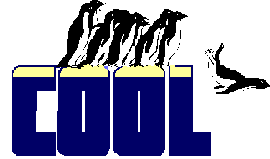Help, Set Help, Set("Help"), Set HelpFilter, Set
Topic, Set Topic ID
Visual FoxPro is unusual in having not
one, not two, but three help engines built in: one for
cross-platform-compatible DBF-based help, one for interfacing to
the native "legacy" Windows HLP engine, and one for compressed
HTML Help CHM files. These flexible commands allow you to use the
best features of each.
|
Usage
|
SET HELP ON | OFF | TO cHelpFileName
cOnOrOff = SET( "HELP" )
cHelpFileName = SET( "HELP", 1 )
HELP [ cTopic | ID nHelpContextID ] [ NOWAIT ]
[ IN [ WINDOW ] winName | IN [ WINDOW ] SCREEN ]
|
Three help engines! What pandemonium! What to do? Here's
our take.The DBF Help is "included for backward compatibility"
and produces the world's ugliest help screens. We think it could
be the basis for an awesome tool for generating help, but we
wouldn't consider actually showing an application with DBF-based
help to a client. The "classic" WinHelp engine is a pretty decent
help engine, and if you already have substantial investment in
tools to create HLP files, don't abandon them just yet. While
Microsoft will be shipping the WinHelp engine as part of the
operating system for some time yet, it's time to plan a
transition to HTML Help soon, if you haven't already.
Finally HTML Help. We think this is a pretty
cool tool. You will notice that in the Developer Downloads
available at www.hentzenwerke.com, the entire Hacker's
Guide is available in HTML Help format (as it was for the
previous version of the Hacker's Guide). We're impressed
with what we can do with this, and we like it. HTML Help provides
all of the capabilities of WinHelp (except one) and is easier to
write (HTML is much prettier than RTF, in our opinion) and
test.
The one gotcha that might keep you using WinHelp for a
while is that HTML Help does not work with the "WhatsThisHelp"
feature of dialogs. Since there are other ways of presenting that
information, such as having a Help button on the form, or using
ToolTips to pass information to the client, we don't think this
is a big loss.Most of the Help commands and optional clauses are
based on Fox Software's original DOS Help engine, and don't apply
to, or don't make sense in most VFP applications. For
applications using either of the newer Windows engines, SET HELP
TO your help file, set the HelpContextIDs of the forms and
controls that can supply help, and sit back and let the engine do
its thing.If you're using the original DOS Help engine, you may
want to SET HELP OFF if you are allowing the user to edit or
modify the DBF form of the file, to avoid a "File is in use"
error. Otherwise, plan to leave Help ON the rest of the time.SET
HELP TO accepts a path and file name. If the filename specified
has an HLP extension, FoxPro uses the WinHelp engine; with a DBF
extension it attempts to use the built-in DBF engine. A file with
a CHM extension runs the HTML Help engine. If you try something
completely different, different versions react in different ways,
but you usually end up with an error message. In VFP 6 and 7, the
DBF engine fires first and reports "Not a table." In VFP 3 and 5,
we got "Not a Windows Help file." In the next version, we're
betting we get an HTML Help engine error, just so they keep
firing differently. Sheesh.
For DOS-based Help, the WINDOW | IN WINDOW
clauses are the same as those described in the MODIFY MEMO topic,
so we won't drag you through the syntax again.
Pass the cTopic
string or numeric HelpContextID to bring up a specific topic.
Items in the Visual FoxPro interface have HelpContextIDs
assigned—use SYS(1023) to sniff them out. You will need to assign
HelpContextIDs to the controls and forms you create. Pass nothing
to get the main contents screen.HELP NOWAIT really is only
applicable for the DBF form of help, as the WinHelp HLP format is
by nature NOWAIT. DBF Help could be a pain to manage inside a
Foundation Read in 2.x, but allowing it to NOWAIT while other
processing goes on seems more natural in VFP.
 |
DBF Help needs a character field for the topic name and
a memo field for the details as the first two fields in the
table. SET HELP to any table that lacks the proper
structure and kablooie! Fatal Errors or Invalid Page Faults
left and right! How rude! We would expect an "I'm sorry,
this is not a valid Help file format," not a crash-and-burn
scene! Unsatisfactory.
|
 |
If your DBF Help has the right structure but no records,
VFP 6 and later displays an error—2036—with the message
"The current Help file is empty" with an OK and a Help
button—think about that one. Versions of VFP before 6.0
would crash, so this is an improvement.
|
 |
Many people seem to be unaware of it, but there is a
another method of invoking help, besides pressing F1 or
issuing the Help command, and that's Shift+F1. Similar to
the "What's This?" option introduced in the Windows 95
interface, Shift+F1 turns the cursor to a combined question
mark and pointer arrow and provides the Help file with the
ContextID of the item clicked on by the user, whether it is
a form, a button or even a menu selection. This form of
"safe" exploring of an interface lets users determine what
actions will occur upon selection of unfamiliar options and
is a great way for them to learn the product
non-destructively. This is a technique that should be
encouraged, we think!
In addition, in combination with SYS(1023), it is a nice
way of determining the HelpContextIDs of the built-in
gadgets (like a GETFONT dialog) that your application's
help file needs to support.
|
|
Example
|
SET HELP TO \VFP\HACKFOX.CHM
SET HELP ON
? SET("HELP") && "ON"
? SET("HELP",1) && "C:\VFP\HACKFOX.CHM"
HELP WhatsThisButton && Brings up help on WhatsThisButton
HELP ID 30000079 && Brings up help on the Options
&& dialog box
|
|
Usage
|
SET HELPFILTER [ AUTOMATIC ] TO lExpression
SET TOPIC TO [ cTopic ] | [ ID nHelpContextID ] [ lExpression ]
|
HELPFILTER is the equivalent of SET FILTER, and applies
only to the DBF form of Help. lExpression can be any expression
that evaluates to a logical true or false value for each record.
The AUTOMATIC keyword causes the filter to be cleared after Help
has been called up and closed. Several folks came up with clever
schemes to add additional fields onto the basic ones supplied
with the DBF-style help and use these fields to supply more
screen-sensitive help than just a single entry. Pressing the
Topics button in DBF-style help while a HELPFILTER is in effect
shows only those records that pass the filter criteria.SET TOPIC
TO allows the Help file to be pointed to a particular entry
before Help is invoked. SET TOPIC TO does not change the position
of the Help file unless the Help command is executed again. Both
forms, the character-based Topic and the numeric ContextID, can
be used with any of the Help engines; however, there are some
slight differences in behavior. For a specific topic to be
displayed, Windows Help requires the entire topic title to be
entered, whereas the DBF format will locate the first topic that
matches the supplied string.
 |
The logical expression makes sense only for DBF Help.
You should also be able to supply a logical expression to
SET TOPIC, similar to that used in SET HELPFILTER. It
worked in 2.6. It doesn't in 3.0, nor does it work in 5.0.
It is no longer documented in 6.0 and later.
|
 |
In versions prior to VFP 7, SET TOPIC didn't work at all
with HTML Help. It works in VFP 7.
|
With most controls and forms, you don't need to set their topics
programmatically. Use their HelpContextID property instead.
|
Example
|
* Using a custom DBF with fields cFIELD and cScreen.
* This should work in 3.0, but doesn't.
SET TOPIC TO cField = This.Name or cScreen = ThisForm.Name
* This form does work with FOXHELP.DBF, HLP and CHM.
SET TOPIC TO "Sample"
* But this doesn't work with CHM help files
SET TOPIC ID TO 1895825500
SET HELPFILTER TO HelpFile.Screen = WONTOP() or ;
HelpFile.Screen = "GENERAL"
* New topics in Help, not covered in the docs:
SET HELPFILTER TO TOPIC = "Changes"
|
Back to Table of Contents
Copyright © 2002-2018 by Tamar E. Granor,
Ted Roche, Doug Hennig, and Della Martin. Click for license
.


